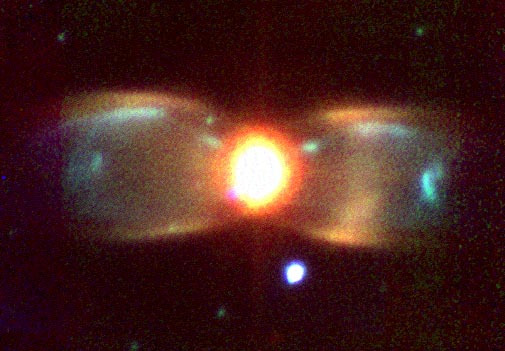The Butterfly Planetary Nebula

Explanation:
As stars age, they throw off their outer layers.
Sometimes a highly symmetric gaseous
planetary
nebula is created, as is the case in
M2-9, also called the Butterfly. Most
planetary nebulae show this
bipolar appearance,
although some appear
nearly spherical.
An unusual characteristic of the Butterfly is that spots
on the "wings" appear to have moved slightly over the years.
The
above picture was taken in three bands of infrared light and
computationally shifted into the visible.
Much remains unknown about
planetary nebulae,
including why some
appear symmetric,
what creates the knots of emission
(some known as
FLIERS),
and how exactly stars create them.
Authors & editors:
Robert Nemiroff
(MTU) &
Jerry Bonnell
(USRA)
NASA Web Site Statements, Warnings,
and Disclaimers
NASA Official: Jay Norris.
Specific
rights apply.
A service of:
LHEA at
NASA /
GSFC
& Michigan Tech. U.

